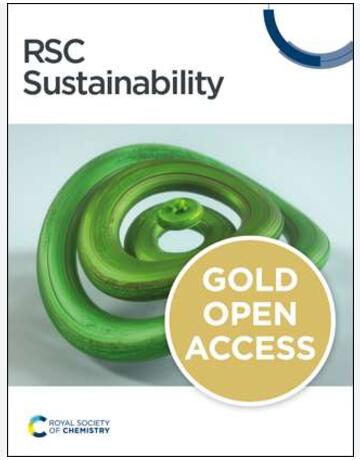利用造纸和纸浆工业废料制造用于隔热的菌丝基材料的适用性
IF 3.3
3区 环境科学与生态学
Q2 ENVIRONMENTAL SCIENCES
引用次数: 0
摘要
纤维素和造纸会产生大量废弃物,如灰渣、活性污泥以及纸浆和造纸工业产生的污泥。根据原材料、法规和子工艺的不同,这些污泥含有大约 30-50% 的有机物,主要由小于 0.02 毫米的纤维素纤维、半纤维素和木质素组成。这项研究利用纸浆和造纸工业产生的污泥作为基质,利用白腐真菌 Trametes versicolor 生产基于菌丝体的生物材料。化学和表面分析表明了新材料的形成。声阻抗分析表明,这些材料的降噪系数和吸音平均值与挤塑聚苯乙烯和聚氨酯相当。此外,材料的导热性接近绵羊毛。因此,利用污泥和多色金龟子制造的生物材料有可能改变行业格局,成为前景广阔的热声绝缘体。本文章由计算机程序翻译,如有差异,请以英文原文为准。
Applicability of Paper and Pulp Industry Waste for Manufacturing Mycelium-Based Materials for Thermoacoustic Insulation
Cellulose and paper produce significant waste such as ash, activated sludge, and sludge from the pulp and paper industry. Depending on the raw material, legislation, and subprocesses, these sludges contain around 30–50% organic matter, mainly composed of less than 0.02 mm cellulose fibers and hemicellulose and lignin. This work used sludge from the pulp and paper industry as a substrate for manufacturing mycelium-based biomaterials using the white rot fungus Trametes versicolor. Chemical and surface analyses revealed the formation of new materials. Acoustic impedance analyses revealed that these materials have a noise reduction coefficient and sound absorption average comparable to extruded polystyrene and polyurethane. In addition, the material’s thermal conductivity was near that of sheep wool. Therefore, the biomaterials fabricated using sludge and Trametes versicolor have the potential to be a game-changer in the industry as promising thermoacoustic insulators.
求助全文
通过发布文献求助,成功后即可免费获取论文全文。
去求助
来源期刊

Sustainability
ENVIRONMENTAL SCIENCES-ENVIRONMENTAL SCIENCES
CiteScore
6.80
自引率
20.50%
发文量
14120
审稿时长
17.72 days
期刊介绍:
Sustainability (ISSN 2071-1050) is an international and cross-disciplinary scholarly, open access journal of environmental, cultural, economic and social sustainability of human beings, which provides an advanced forum for studies related to sustainability and sustainable development. It publishes reviews, regular research papers, communications and short notes, and there is no restriction on the length of the papers. Our aim is to encourage scientists to publish their experimental and theoretical research relating to natural sciences, social sciences and humanities in as much detail as possible in order to promote scientific predictions and impact assessments of global change and development. Full experimental and methodical details must be provided so that the results can be reproduced.
 求助内容:
求助内容: 应助结果提醒方式:
应助结果提醒方式:


